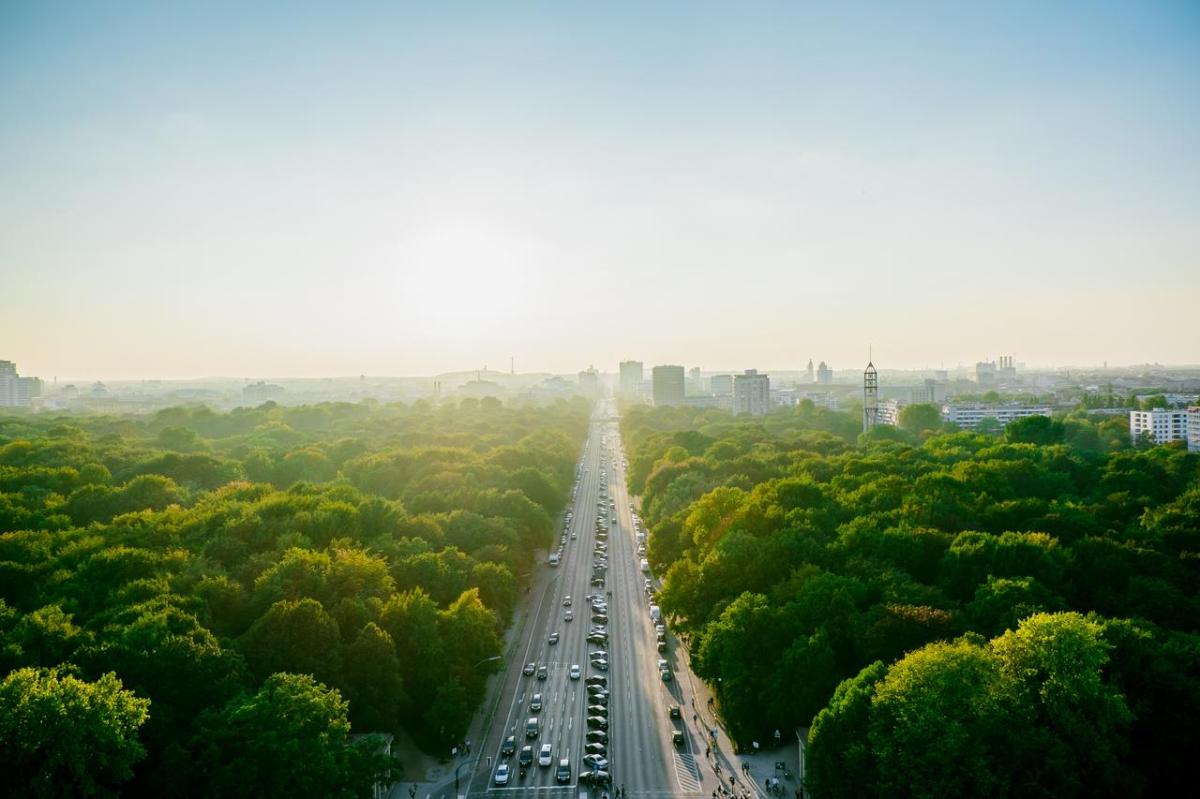In this special feature we are going to explain what urban green corridors are, what they consist of and their importance in cities to turn them into sustainable homes for all citizens. Achieving this, moreover, is one of the 17 Sustainable Development Goals of the United Nations. Because smart cities are also green.
What are green corridors and what is their purpose?
Professor Emeritus of Landscape Architecture Jack Ahern of the University of Massachusetts defines green corridors as “networks of land containing linear elements that are planned, designed, and managed for multiple purposes, including ecological, recreational, cultural, aesthetic, or other purposes consistent with the concept of sustainable land use”.
Another definition that may shed some more light on the matter is offered by the European Environment Agency: green corridors are “Avenues along which animals of great variety can travel, plants can spread, genetic exchange can occur, populations can move in response to environmental changes and natural disasters, and threatened species can replenish themselves from other areas”.
In short, a green corridor is an urban route that connects different natural areas, be they parks, forests, nature reserves, etc., that have been interrupted by man’s action in building cities, roads, crops or different industrial activities.
What are the essential purposes of an urban green corridor?
There are several essential purposes and benefits of green corridors in cities. The Greenways website summarises in six essential purposes and benefits for citizens of these natural pathways within cities:
- To improve the transport of bicycles, through appropriate lanes, as well as pedestrian traffic. In this way, an alternative to the car or other polluting means of transport is made possible.
- Improve health through an active road. A city with green corridors is a city that invites people to walk rather than to use polluting means of transport. In this way, physical activity is encouraged.
- An undoubted benefit in terms of the function of natural ecosystems that still persist in cities despite the hand of man. They protect and connect fragmented habitats, thus protecting flora and fauna. Green corridors also reduce air pollution in two essential ways: they offer an alternative to the car and protect large areas that generate oxygen and filter out pollutants such as ozone, sulphur dioxide and heavy metal particles.
- They can help prevent flooding. Corridors can act as a rainwater absorber thanks to vegetation, thus reducing the amount of water reaching sewers and rivers. In addition, such vegetation can slow the flow of water, reduce groundwater pollutants, as well as creating areas specifically designed to retain and store water during times when flooding is most likely to occur.
- Green corridors are a commitment to sustainable tourism. These natural routes can provide an opportunity for economic growth: the value of neighbouring properties increases, businesses are generated for renting bicycles, skates, or even kayaks and canoes in those places where navigation is possible, as well as restaurants and hotels.
Green corridors in Spain: still work to be done
It was in 2021 that the National Strategy for Green Infrastructure and Ecological Connectivity and Restoration came into force through Order PCM/735/2021, a document, in the words of the official website of the Spanish Government, “which regulates the implementation and development of Green Infrastructure in Spain, establishing a harmonised administrative and technical framework for the whole of Spanish territory, including maritime waters under national sovereignty or jurisdiction”. This strategy conceives Green Infrastructure as an ecologically coherent and strategically planned network of natural and semi-natural areas and other environmental elements, designed and managed for the conservation of ecosystems and the maintenance of the services they provide”.
Several projects are currently underway to conserve and improve the green infrastructure of Spanish cities. These are some of the most relevant ones:
- Green corridors Passeig de Sant Joan. Barcelona’s Urban Ecology Department, in collaboration with CIDEU (Centro Iberoamericano de Desarrollo Estratégico Urbano), has developed the Plan del Verde y de la Biodiversidad, which consists of creating an ecological urban infrastructure, the main example of which is the remodelling of Passeig de Sant Joan.
- Madrid River. One of the great urban green corridors of our country. It was inaugurated in 2011 and covers an area of 120 hectares. Previously, Madrid Río was occupied by the train tracks that connect the stations of Atocha and Chamartín. It is a place with large green areas, with children’s playgrounds and sports facilities, where different cultural and sporting events are also scheduled: concerts, festivals, popular races, etc.
- Seville Green Corridor. As part of the works to extend the Seville tramway, which will connect the stations of San Bernardo and Santa Justa, the “creation of a greener space is envisaged, with more trees and the planting of new shrubs and herbaceous plants”.
- Green corridor of Tamaraceite and Ciudad Alta de las Palmas de Gran Canaria. On 20 July last, the City Council of Las Palmas de Gran Canaria was granted 3,997,600 million euros to connect the neighbourhoods of Tamaraceite and Ciudad Alta through a natural corridor. Thanks to this corridor, nine areas of these two urban areas will be regenerated and more than 10,000 trees and shrubs will be planted. The corridor will cover an area of about 46 hectares and is expected to be completed by 2025.
Smart cities must move towards a sustainable model in which the pedestrian is prioritised. A place to live, relax, exercise and enjoy nature, even in the middle of the city. Green corridors can make this possible: they clean the air, provide walks for citizens to enjoy, help reduce stress and improve mental wellbeing, and conserve our biodiversity.







